This post may contain affiliate links. Please read my disclosure.
This Sous Vide Halibut is tender and moist with a buttery garlic flavor and fresh thyme! It takes just 45 minutes to cook in a sous vide water bath and you can customize the temperature to get the texture you like!
The sous vide method is my favorite way to prepare this meaty white fish! It’s really my favorite way to prepare any kind of fish these days, like this sous vide sea bass, sous vide tuna, sous vide mahi mahi, sous vide salmon with pineapple miso glaze or this sous vide cod. If you haven’t tried it yet, it’s so good!
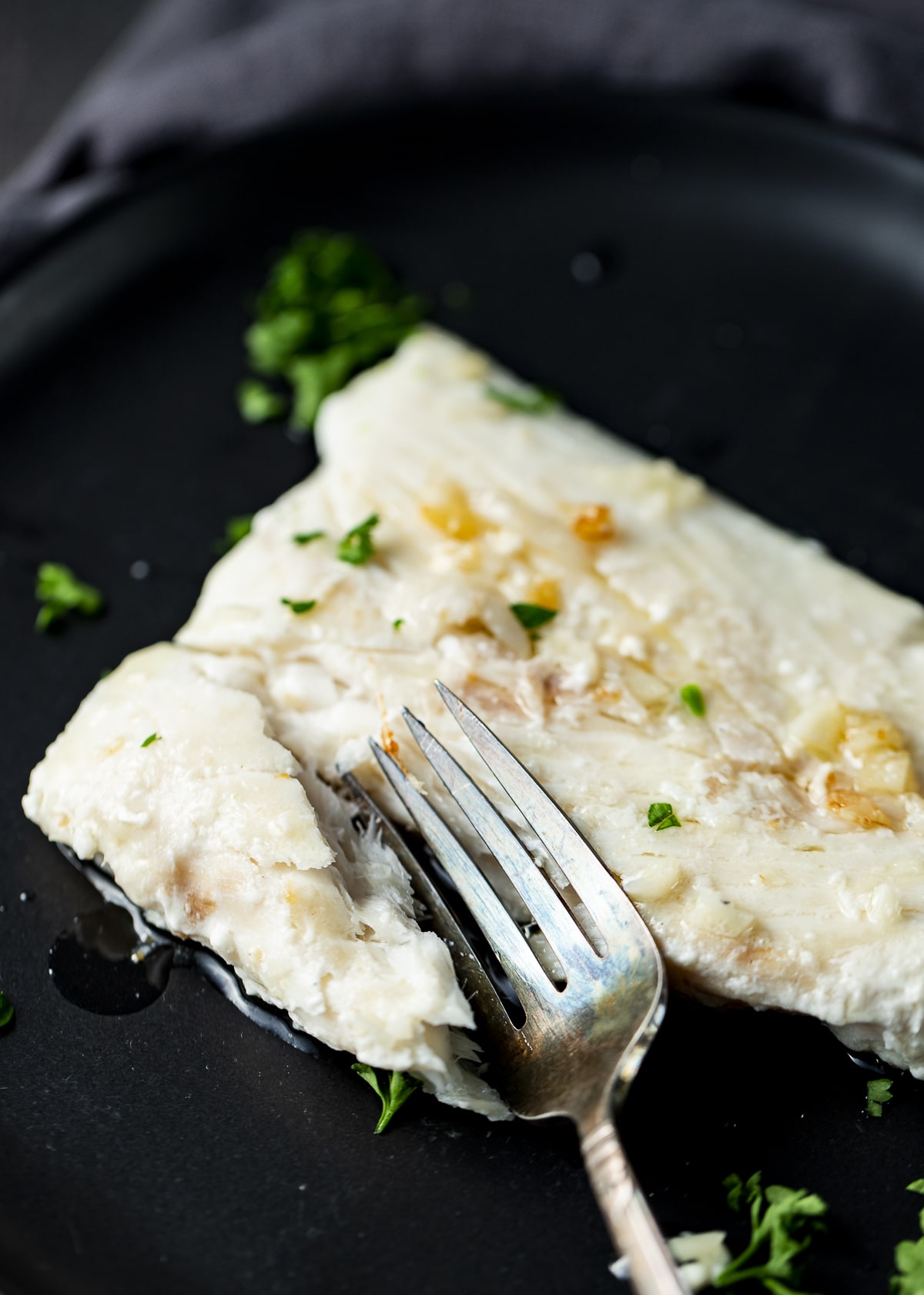
Just by setting the temperature of your water bath, you can take the guesswork out of cooking fish. So, you can have halibut cooked just the way you like it - a little rare, firm and flaky or somewhere in between!
You’ll also love that this recipe isn’t complicated. You just need a simple seasoning of salt, thyme, garlic and butter, and a few lemon wedges for serving.
Jump to:
If you're looking for something a little more complicated, this sous vide tilapia is coated with breadcrumbs and crisped after it finishes in the sous vide.
All you need is a side of sautéed green beans and crispy roasted potatoes, and you have dinner ready for date night or a dinner party!
Read: 12+ Sous Vide Fish Recipes
What is Sous Vide?
Sous vide is basically a method of cooking using what is called an immersion circulator (i.e. the sous vide machine). This immersion circulator circulates water in a temperature controlled water bath at a certain temperature to perfectly cook your food every time.
Because the temperature doesn't change, and it keeps your meat (or dessert, veggies, etc.) at the same temperature, your risk of overcooking becomes very minimal.
To learn even more about sous vide cooking, head over and read "what is sous vide cooking and the benefits of sous vide cooking."
What is the Water Displacement Method?
The displacement method is where you slowly submerge a ziplock bag in water pushing the air out of the top of the bag (the bag should be slightly open at the top to allow air to escape).
Use a clip (I use sous vide magnets) to clip the bag to the side to keep it from floating and getting air and/or water inside.
Tools Used
You will also want to check out these posts on the best sous vide containers and the best sous vide bags for more information!
Want to Save This Recipe?
Enter your email & I'll send it to your inbox. Plus, get great new recipes from me every week!
By submitting this form, you consent to receive emails from Went Here 8 This.
Other sous vide recipes
- Sous Vide Sweet Potatoes
- Sous Vide Swordfish
- Sous Vide Risotto
- Sous Vide Short Ribs
- Sous Vide Carrots
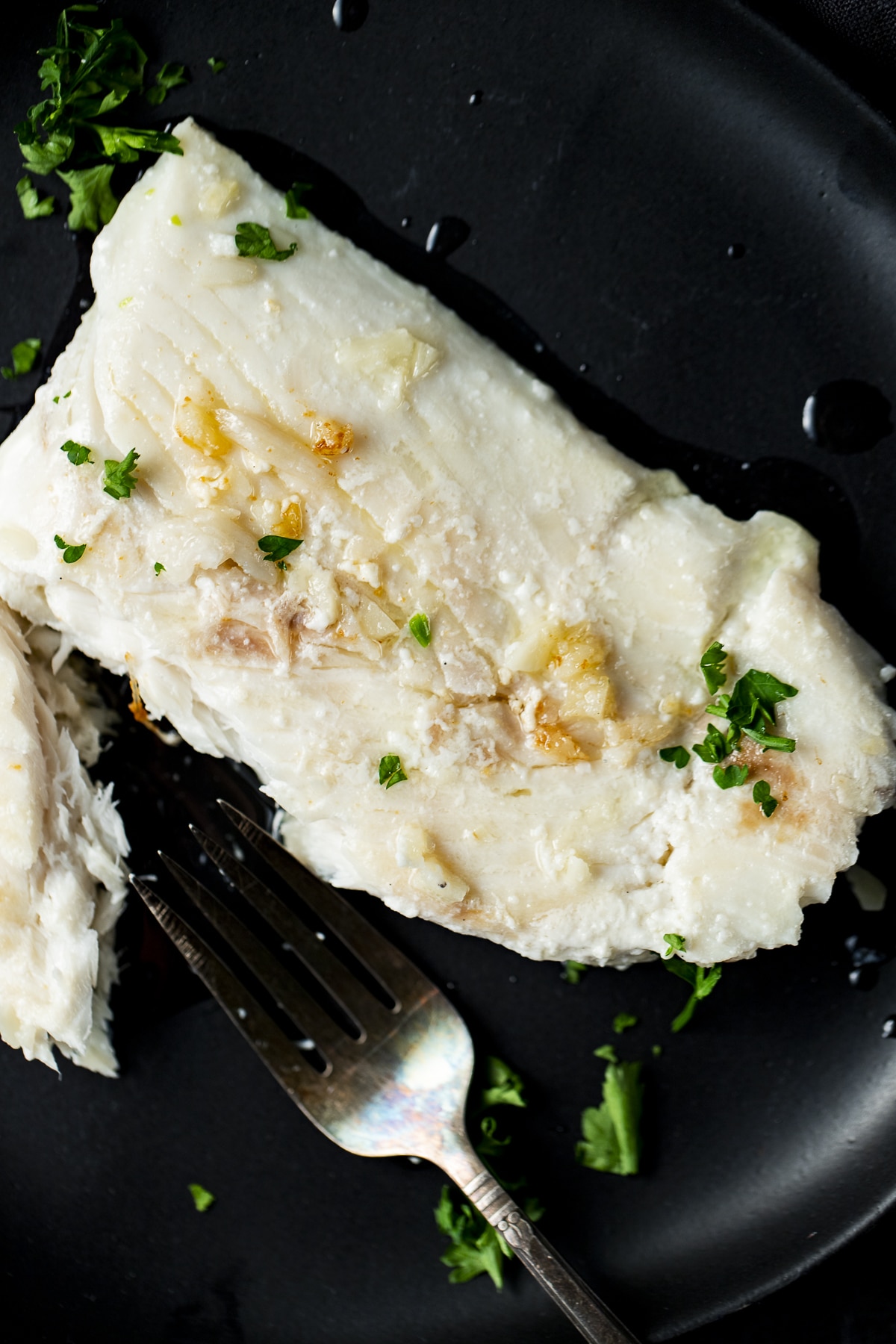
Why this recipe works
- Since halibut can be easily overcooked, using the sous vide method is a great way to ensure that it’s perfectly cooked. The controlled temperature of the water bath results in tender and moist halibut every time!
- You can set the temperature of the water bath to cook the halibut to your preferred level of doneness. So, whether you like the texture of halibut to be a little more rare or firm and flaky, the sous vide helps you achieve that!
- Halibut can be pricey, especially if you order it when dining out. Using the sous vide allows you to have a restaurant quality meal and save a little money all at the same time!
What is halibut?
Halibut is a large flatfish that lives and feeds on the bottom of the ocean. It’s a lean white fish, with a thicker and meatier texture than cod and a mild, sweet and gentle flavor. It can be farm-raised or wild-caught and is rich in omega-3 fatty acids, making it a high quality source of protein.
Ingredients
Please refer to the recipe card below for a full list of ingredients and quantities.
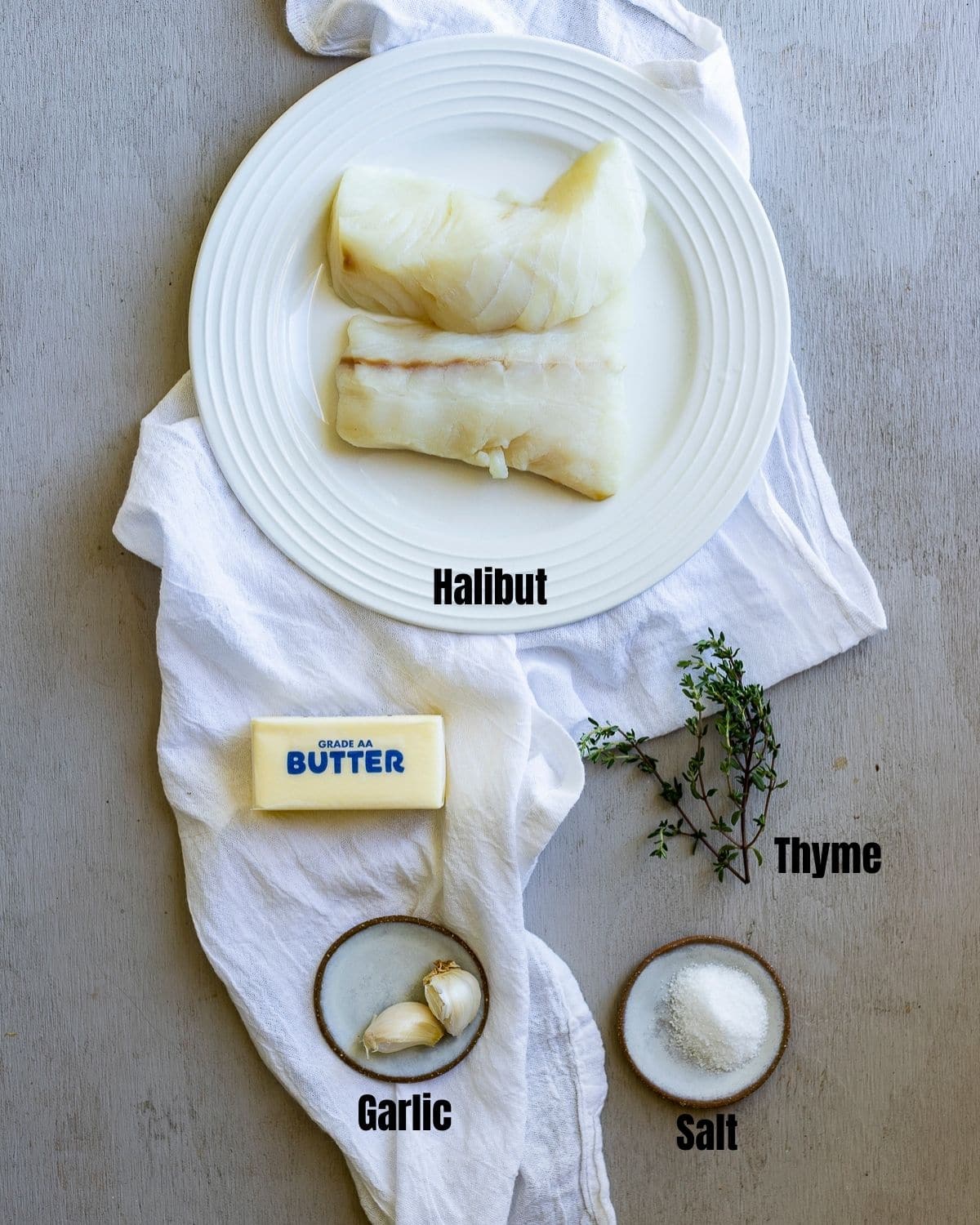
You’ll need 4-6 ounce pieces of halibut. I used fillets with the skin on but you can remove it if you prefer. If you use halibut steaks and they’re thicker, you may need to increase the cooking time.
The halibut is salted with 2 teaspoons of salt and left to sit for 30 minutes. This is done to enhance the flavor.
You’ll add 8 tablespoons of butter (cut into 1 tablespoon pieces) to the sealable bag to cook with the halibut. This adds flavor as the halibut soaks in the garlicky, buttery goodness. As salt has already been added to the halibut, I recommend using unsalted butter.
For a fresh, herby flavor, 2 sprigs of thyme are added to the sealable bag. If you can’t find fresh thyme, fresh oregano will work well as a substitute.
To add some garlicky flavor, 2 minced cloves of garlic are cooked with the halibut. If you like an extra garlicky flavor, feel free to add another clove.
Lastly, for serving, you’ll need fresh lemon. Just a squeeze adds a pop of flavor that helps balance out the salt and garlic.
Step by step instructions
Rub the salt on the halibut and let it sit for 30 minutes.
Heat a sous vide water bath to 122F degrees.
Place in a vacuum seal bag with the remaining ingredients (except lemon). Make sure to spread the butter pieces all over the bag to evenly distribute it.
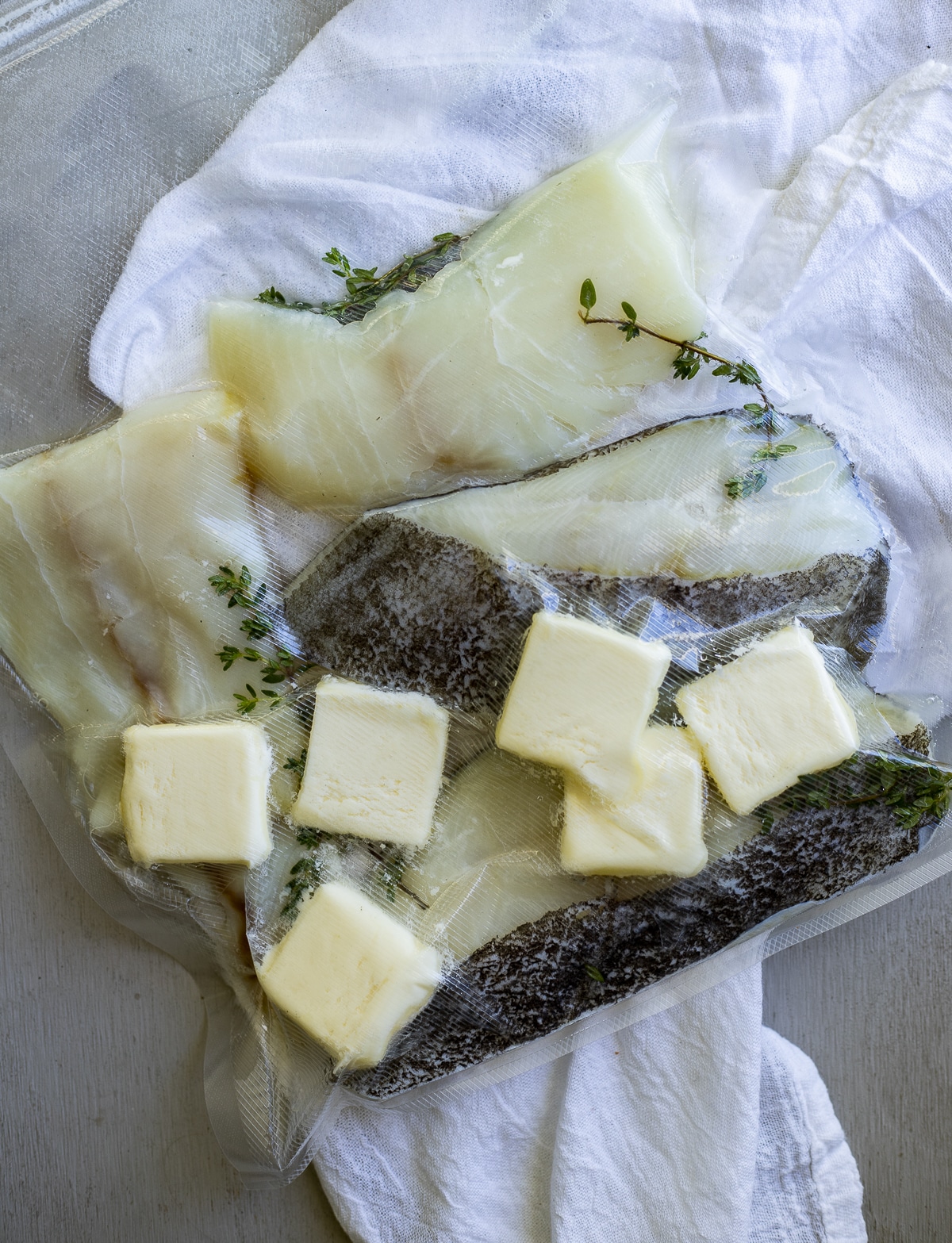
Cook the halibut for 45 minutes.
Remove the bag and reserve the melted butter. Carefully remove the fish fillets from the bag and pat dry.
Heat a skillet over medium-high heat and add the reserved butter from the bag.
Place 2 of the fish fillets in the skillet and brown for 30-60 seconds, basting with butter as they cook.
Remove and repeat with the other two fillets.
Serve drizzled with fresh lemon juice.
Expert tips
- When placing the halibut pieces in the sealable bag, make sure they’re in a single layer. This helps them cook evenly.
- You’ll also want to make sure the butter pieces are evenly distributed around the fillets for maximum coverage when the butter melts.
- If your halibut fillets are thick, you may need to increase the cooking time to 60 minutes.
- For the best browning, pat the halibut dry with a paper towel before placing it in the hot skillet.
- Be careful not to brown the halibut for too long. Any longer than 30-60 seconds per side and it can start to dry out.
- Don’t overcrowd the pan when browning the halibut fillets. To do this, you’ll need to brown them in two batches.
- Whether you use a vacuum seal or ziplock bag, make sure to remove the air from the bag to avoid bacteria getting in. This will ensure your halibut cooks safely.
- You should also make sure the bag is completely submerged in the water bath. I like to use a sous vide sinker weight to prevent it from floating.
- If the bag starts to fill with air and float, you can open the bag, remove the air and just reseal it.
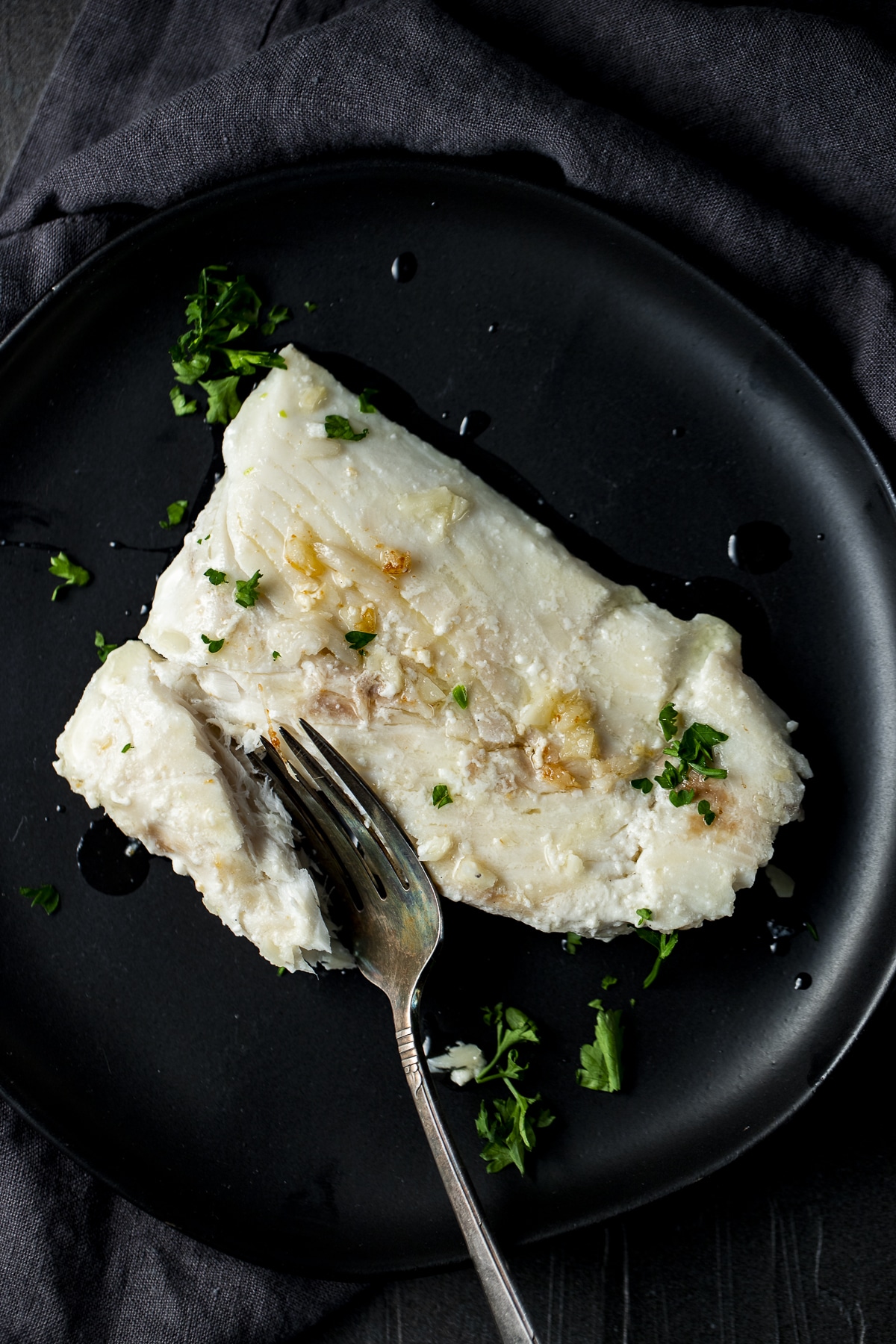
Common questions
It depends on your preferred texture. We prefer halibut that’s tender and moist with layers that are on the rare side. For this texture, you’ll want to set the temperature of your sous vide water bath to 122F degrees. If you prefer it flakier, set the temperature to 130F degrees. For firm and flaky, increase this to 140F degrees. Just note that the halibut can end up a little dry at this temperature.
It only takes 45 minutes to cook halibut in a sous vide water bath. If your fillets are thick, you should increase the cooking time to 60 minutes.
Yes! Salting it helps season the flesh and prevent the halibut from drying out as it cooks. It’s just 30 minutes so I don’t recommend skipping this step!
While the halibut is completely cooked when it comes out of the water bath, browning and basting it with butter adds additional flavor. Browning also improves the presentation by adding color.
Yes, you can sous vide halibut from frozen. Just add another 15 minutes to the water bath time.
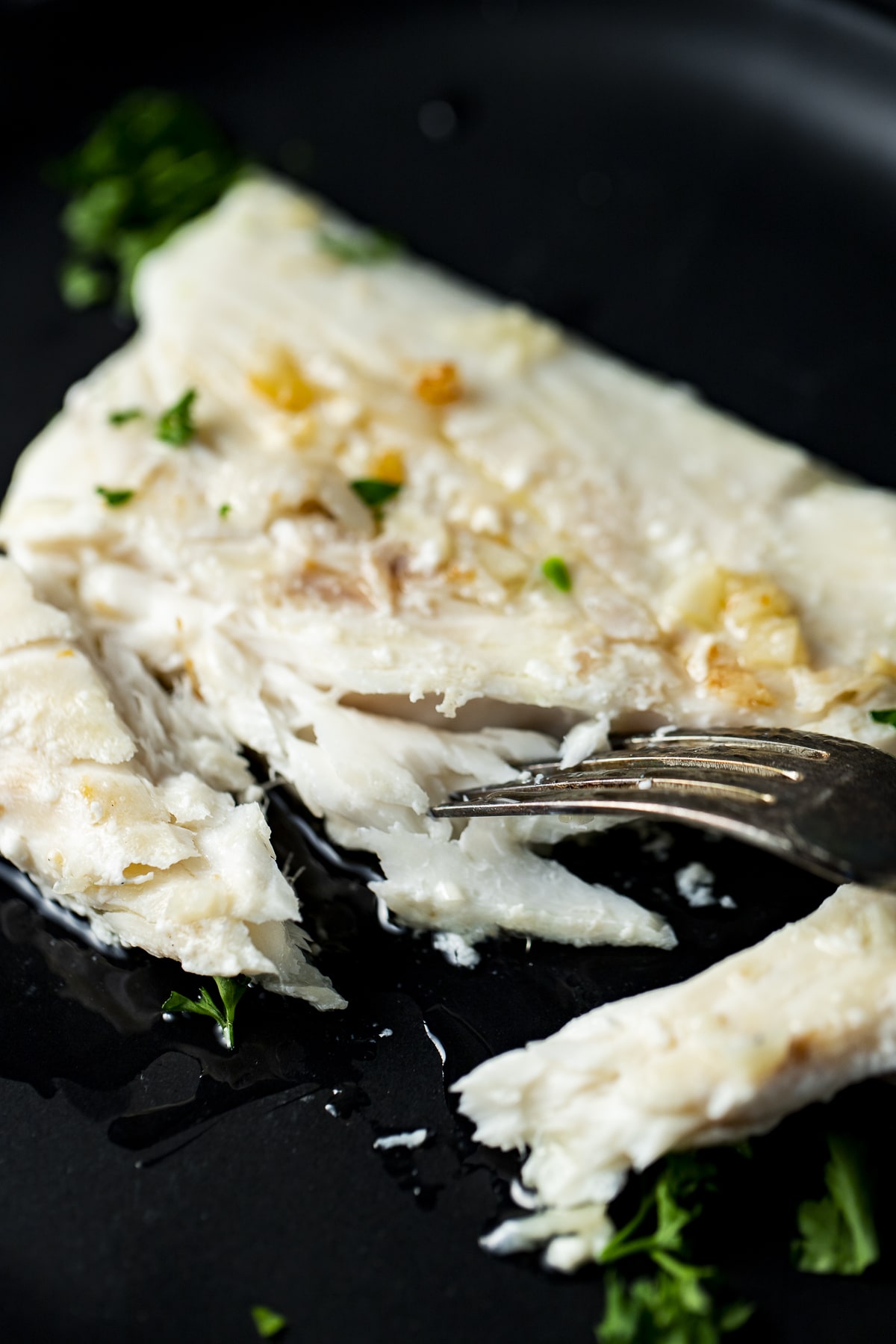
Storage and reheating
For the best quality, halibut should be enjoyed as soon as it’s cooked as reheating it can sometimes lead to overcooking and drying it out.
If you have leftovers, you can store them in an airtight container in the fridge for 3-4 days.
To reheat, place the halibut on a baking sheet and cover with foil. Warm in the oven on 275F degrees until heated through (about 15 minutes).
The key to not drying it out is warming it slowly at a low temperature. You can also add a splash of water, if necessary. Avoid reheating in the microwave as this can lead to a rubbery texture.
Serving options for halibut
- Black Truffle Risotto
- Instant Pot Brussels Sprouts
- Truffle Mashed Potatoes
- Air Fryer Broccoli
- Instant Pot Carrots
If you love this recipe, please leave a star rating and a comment below and let us know your favorite thing about it. We'd also love to connect on Instagram! Follow us at @went_here_8_this for awesome recipes and all sorts of fun food stuff 🙂
Recipe
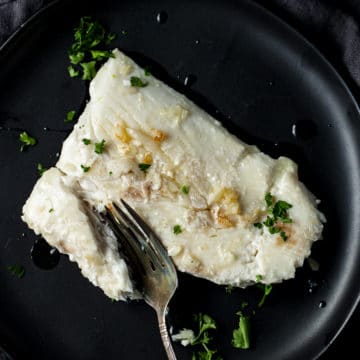
Sous Vide Halibut
Ingredients
- 4-6 ounce pieces of halibut
- 2 teaspoons salt
- 8 tablespoons butter cut in 1 tablespoon pieces
- 2 sprigs thyme
- 2 garlic cloves minced
- lemon for serving
Instructions
- Rub the salt on the halibut and let it sit for 30 minutes.
- Heat a sous vide water bath to 122F degrees.
- Place in a vacuum seal bag with the remaining ingredients (except lemon). Spread the butter pieces all over the bag to evenly distribute it.
- Cook the halibut for 45 minutes.
- Remove the bag and reserve the melted butter. Carefully remove the fish fillets from the bag and pat dry.
- Heat a skillet over medium-high heat and add the reserved butter from the bag.
- Place 2 of the fish fillets in the skillet and brown for 30-60 seconds, basting with butter as they cook.
- Remove and repeat with the other two fillets.
- Serve drizzled with fresh lemon juice.
Expert Tips:
- When placing the halibut pieces in the sealable bag, make sure they’re in a single layer. This helps them cook evenly.
- You’ll also want to make sure the butter pieces are evenly distributed around the fillets for maximum coverage when the butter melts.
- If your halibut fillets are thick, you may need to increase the cooking time to 60 minutes.
- For the best browning, pat the halibut dry with a paper towel before placing it in the hot skillet.
- Be careful not to brown the halibut for too long. Any longer than 30-60 seconds per side and it can start to dry out.
- Don’t overcrowd the pan when browning the halibut fillets. To do this, you’ll need to brown them in two batches.
- Whether you use a vacuum seal or ziplock bag, make sure to remove the air from the bag to avoid bacteria getting in. This will ensure your halibut cooks safely.
- You should also make sure the bag is completely submerged in the water bath. I like to use a sous vide sinker weight to prevent it from floating.
- If the bag starts to fill with air and float, you can open the bag, remove the air and just reseal it.
Nutrition
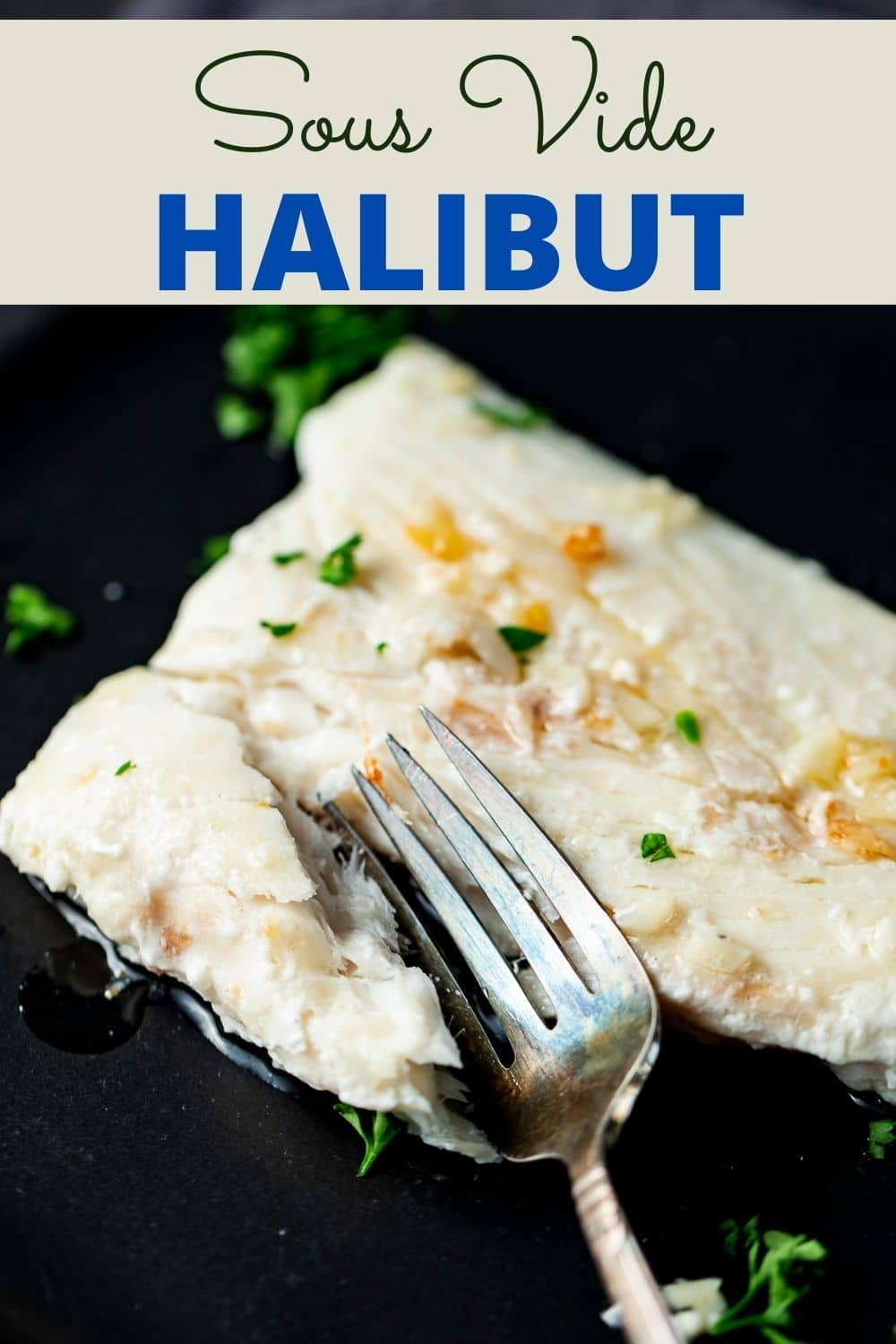




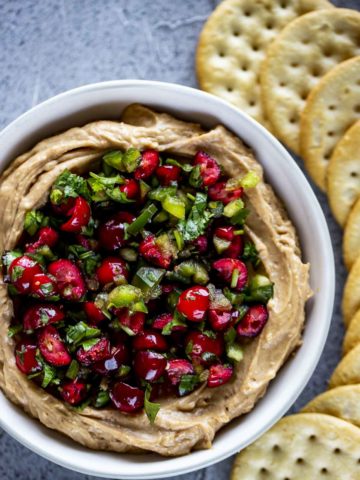

Toni
This is so good! I love how tasty it is! Thanks for the recipe!
Danielle
I'm so glad you liked it!
Ieva
Sous Vide cooker was always something I wanted to buy! You have some amazing sous vide recipes on your blog, and I may just have to invest in one. This halibut must be so good! Can you suggest a recipe or two for complete sous vide novice? Don't want to start practising with one of the most expensive fish (at least in the UK...) Thanks in advance!
Danielle
It is the most amazing thing ever!! I have a ton of recipes on the site, but some of the easiest ones to get started might be sous vide pork tenderloin, sous vide pork loin, or these sous vide french dip sandwiches. Try browsing all the sous vide recipes!
Amanda Wren-Grimwood
Halibut is so delicious but can easily be overcooked. This is the perfect way to get moist delicious fish - thanks!
Danielle
Yes, it overcooks so easy! This totally prevents that 🙂
sue
We adore halibut ~ now I just need a sou vide machine!!
Danielle
You'll love it once you get it!
Claudia Lamascolo
One of my favorite seafood and hard to find I usually order it online. This is a must make cant wait!
Danielle
I hope you love it!